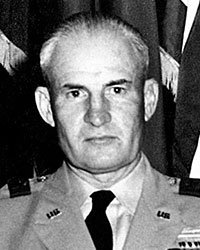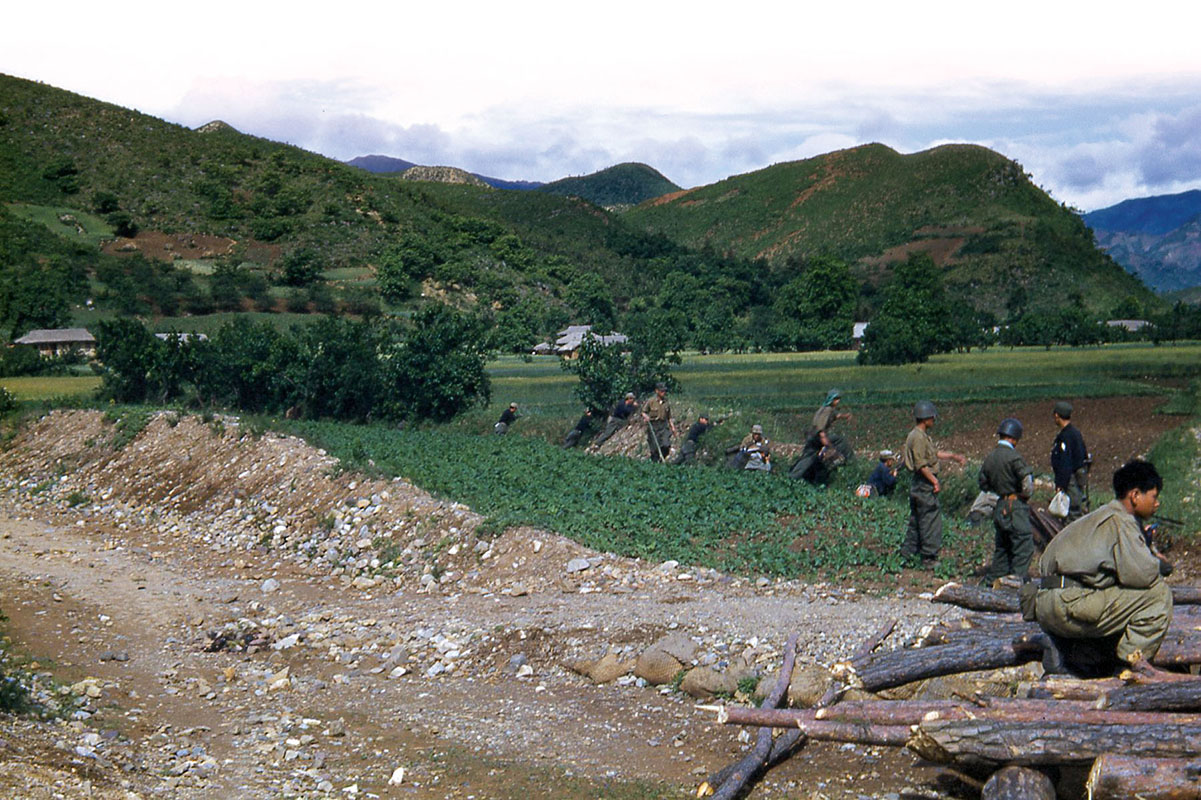FULL SERIES
Veritas Vol. 8, No. 2
- Creating an Army Guerrilla Command: The First Six Months, Part 1
- One Guerrilla’s Fight: Operating Behind Enemy Lines in the Korean War
- Working with what you have: The Challenges of Guerrilla Warfare on the Korean East Coast, 1951-1953
- Facets of the U.S. Army Guerrilla Commands in Korea: A Photographic Overview
- John H. McGee: Soldier, Leader, Trainer
- A History of Resistance: The Origins of the North Korean Anti-Communist Guerrillas, 1945-1950
- TLO: Line-Crossers, Special Forces, and the “Forgotten War”
DOWNLOAD
One important aspect of the Korean War was the U.S. Army’s effort to integrate the large numbers of anti-Communist guerrillas into its campaign. Scholarly research on these operations has been scant and what is known comes largely from the memoirs of the participants. Consequently, certain inaccuracies and ‘mythology’ have become a part of the history of unconventional warfare in Korea, a subject that contains many relevant lessons for today’s Army. The next two issues of Veritas will present a detailed picture of the Eighth Army’s creation of a guerrilla command and explain the various entities that were involved in unconventional warfare during the war. This issue will, with some exceptions, restrict itself to the early history of the origins of the North Korean anti-Communist guerrilla movement that began in 1945 through the first six months of guerrilla command operations in 1951. The guerrillas, while a force provider for the U.S. Eighth Army (EUSA), were also a dilemma.
The Soviet Union’s eleventh hour declaration of war against Japan on 8 August 1945 gave the Communists a part in the post-war demobilization of the Japanese Army in China and Korea. This role provided a foothold in North Korea sufficient to establish a Communist regime north of the 38th Parallel. After a brief period of internal conflict, Soviet-supported Kim Il Sung emerged as the leader of the North Korean Communist Party. During his consolidation of power, Kim alienated many who fell under his rule. Thousands of North Koreans fled south. This exodus was eventually halted. By early 1950, those opposed to the Communist regime were forced to hide in the mountains. Anti-Communist sentiment was particularly strong among the people of Hwanghae and Pyongan Provinces on the southwest coast of North Korea.
The North Korean People’s Army (NKPA) attack against South Korea in June 1950 removed many of its Army units from the provinces and allowed the anti-Communists some freedom to organize. The UN landing at Inch’on in September 1950 routed the NKPA, sending it into headlong retreat, opening the way for anti-Communist elements in North Korea to regain control of their villages. This democratic freedom was short-lived, when the massive incursion by the Chinese Communist Forces (CCF) in November 1950 again pushed the UN forces south of Seoul. It was during the CCF offensive that many anti-Communist resisters sought refuge on the border islands off the western coast.

With as many as twenty-five thousand guerrillas postured on the North Korean flank, a desperate Eighth Army seized the opportunity to potentially tie up substantial numbers of enemy troops along the coast. The fact that the guerrillas were poorly-trained and equipped was the dilemma for the EUSA G-3 (Operations). To turn this problem into an asset, Eighth Army in January 1951 went to its veteran troubleshooter, Colonel (COL) John H. McGee, G-3 Miscellaneous Division.
A World War II veteran of the Southwest Pacific Theater and limited guerrilla operations in the Philippines, COL McGee was no stranger to difficult assignments. He had formed the Eighth Army Rangers, created a Ranger Training Center, organized the GHQ Raider Company and established the United Nations Reception Center to integrate the military forces of other nations into the war effort.1 COL McGee was the architect of the EUSA’s counter-guerrilla effort to destroy enemy guerrillas, deserters and by-passed soldiers who continued to harass UN troops behind friendly lines. These experiences provided McGee with a keen appreciation of guerrilla operations. His approach was to form an EUSA organization that utilized existing guerrilla formations to accomplish three specific missions.
His first priority was to train the guerrilla bands to effectively conduct raids and sabotage operations against North Korean units stationed along the western coast north of the 38th Parallel. Concurrently, he sought to establish a guerrilla base in the mountains along the east coast of North Korea and thirdly, form a unit to parachute into central North Korea to conduct sabotage and collect intelligence. The articles in this issue detail McGee’s efforts to establish the guerrilla command, and the nature of operations in its first six months.2 He was to lay the groundwork to accomplish these objectives.
On the west coast, the large guerrilla population was formed into two organizations known as WILLIAM ABLE Base (later LEOPARD Base) and WOLFPACK (activated a year later), that performed similar missions from island strongholds on the west coast. In the east, Task Force KIRKLAND (TF KIRKLAND) conducted raids and agent insertions from a base on Nan-do (Al-som), an island ten miles off-shore north of the 38th Parallel. TF Kirkland would continue to conduct operations on the east coast until the signing of the Armistice in 1953. The Tactical Liaison Office (TLO) fulfilled a portion of McGee’s third priority, intelligence collection.
Originally created in 1949 as the Korean Liaison Office (KLO) within the Far East Command (FEC) G-2, the mission of the TLO changed in early 1951 from the gathering of human intelligence (HUMINT) to support a strategic campaign to collecting tactical intelligence forward of EUSA front line units. This shift in mission resulted in a name change to the Tactical Liaison Office. By infiltrating North Korean and Chinese POWs and defectors and South Korean volunteers through the front lines, TLO tried to provide a current intelligence picture to the division commanders of the opposition facing them. Of particular interest, the first school-trained Special Forces soldiers to be deployed to a combat theater arrived in Korea beginning in March 1953. The experiences of Master Sergeant (MSG) John E. Kessling and other early Special Forces troops form a significant part of the TLO story. The TLO remained in operation until 1954, long after the signing of the Armistice.


This issue looks at the historical background of anti-Communist North Korean guerrillas based on the off-shore islands and how EUSA formed a guerrilla command to capitalize on their existence. Both TF KIRKLAND and the TLO are covered in detail. An account of an early guerrilla operation told from the perspective of the leader is provided. The next issue will look at the evolution of the guerrilla command and describe the various units and agencies that conducted special operations as the war progressed. The role of Special Forces in the training and the eventual demobilization of the guerrillas after the Armistice will be covered. What follows will bring more clarity to what has traditionally been a murky picture of the guerrilla war in Korea.
